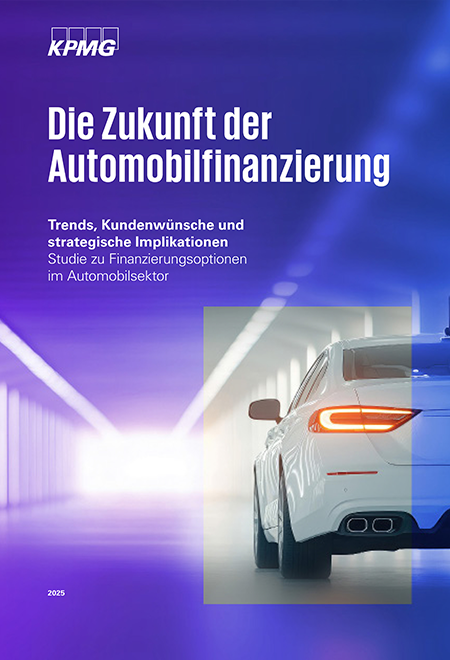What needs to be considered in order to meet the needs and wishes of customers in the coming years when it comes to car financing? This question is answered by our industry-experienced experts in the study ‘The future of automotive financing’. Survey results were evaluated and categorised for the analysis.
Tom Lurtz
Partner, Performance & Strategy, Enterprise Performance
KPMG AG Wirtschaftsprüfungsgesellschaft
Automotive financing in focus: background to the survey
200 participants from different age groups, income brackets and family backgrounds provided insights into financing preferences, budgets and satisfaction with advisory services. Factors in the surveyed financing preferences included interest rates, instalment amount and term. A balanced gender distribution ensured representative results in the survey.
Key findings of the survey on automotive financing
It is clear that younger consumers favour flexible options such as leasing or car subscriptions. These options enable more frequent vehicle changes, for example. For older - and higher-income - customers, on the other hand, credit financing is popular.
For the vast majority, the most important factor influencing the acceptance of an offer is the amount of the monthly instalment payment. It is striking that older and higher-earning respondents are significantly more satisfied with the advice they receive than younger respondents with lower incomes.
What the results of the survey mean for automotive financiers
- Companies that offer customised financing products to different target groups can gain market share in a highly competitive environment through optimised customer centricity.
- Customer satisfaction can be increased through communication and service training for advisors who are in contact with younger and lower-income consumers, for example.
- The implementation of digital solutions is advisable in order to automate processes, improve quality and efficiency and increase transparency in customer decision-making.
Overall, the study shows that the customer segments must be considered in a very differentiated manner. This makes it possible to derive adjustment options in product design and sales. Our experts explain the significance of the different expectations in detail and show which success factors are particularly important - from data-driven strategies to hybrid customer approaches.



